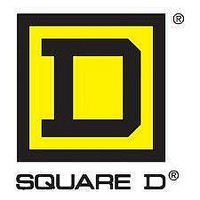990XCP98000 SQUARE D, 990XCP98000 Datasheet - Page 258

990XCP98000
Manufacturer Part Number
990XCP98000
Description
QUANTUM CPU BATTERY FOR S
Manufacturer
SQUARE D
Datasheet
1.990XCP98000.pdf
(463 pages)
Specifications of 990XCP98000
Rohs Compliant
YES
Battery Capacity
1800mAh
Battery Technology
Lithium
Battery Voltage
3V
Battery Terminals
Connector
Weight
0.12lb
- Current page: 258 of 463
- Download datasheet (22Mb)
10
10
1
1
2
2
3
3
4
4
5
5
6
6
7
7
8
8
9
9
Presentation
6/40
DTE
DTE
DTE
DTE
DTE
DTE
DTE
Modicon
automation platform
Ethernet in machines and installations
Infrastructure
The ConneXium Industrial Ethernet range consists of a complete family of products
and tools required to build the infrastructure of an Industrial Ethernet network. The
following pages give an overall view of the information enabling optimum design of a
network and selection of its components.
There are three main areas of differentiation between Ethernet applications in an
office environment and Ethernet applications in an industrial environment. These are:
b
b
b
Unlike the office environment, and even though ISO/IEC is currently working on
them, no clearly defined specifications yet exist for Ethernet devices targeted at
industrial applications. The specifications for what is referred to as Industrial
Ethernet are defined by different agencies or entities according to their nature and
what the automation market has traditionally used.
The environmental specifications for Industrial Ethernet devices are today defined by
the agencies that traditionally define the specifications for standard industrial
devices (UL, CSA, e, etc.).
IEEE 802.3 defines the physical layer specifications for the Ethernet network
(connector types, distance between devices, number of devices, etc.) while standard
11801 (similar to TIAEIA 568B and CENELEC EN 50173) gives layout guidelines for
installers.
ISO/IEC is currently working on specifications relating to performance.
The Ethernet 802.3 link layer is based on the collision detection mechanism (CSMA
CD). When information from a node collides on the network, a collision is generated
and the information is sent again. The process of re-sending information causes
delays in its propagation and could affect the application.
A collision domain is a group of Ethernet end devices interconnected by hubs or
repeaters (devices that receive information and send it out to all their other ports, no
matter where the destination device is connected); this means that all devices will be
affected by collisions.
With the availability of full duplex switches (devices that receive information and
send it out only through the port where the destination device is connected), collision
domains have disappeared.
Consequently, for industrial automation applications, it is strongly recommended to
always use full duplex switches to interconnect devices. In this way, collision
domains are totally eliminated.
In a star topology, all devices are connected through an intermediate device.
Ethernet Star
In an Ethernet star, the intermediate device may be a hub or a switch. The star is
the topology most frequently used in corporate networks and at present is used in
most automation applications. As mentioned previously, for industrial Ethernet
applications the use of full duplex switches (rather than hubs) as central devices is
strongly recommended.
Deploying Star topologies with ConneXium
Hubs and switches in the ConneXium range can be used to implement a star
topology.
The bus is a topology commonly used in traditional industrial automation networks.
A single trunk cable connects the devices on the network, usually via passive or
active T-connectors, or directly chained (daisy chain). Devices can usually be
installed anywhere along the bus.
Presentation
Office Ethernet versus Industrial Ethernet
Principles of Ethernet 802.3
Different network topologies
Star topology
Bus topology
Environment
Layout (not related to the physical layers)
Performance
®
Quantum
™
Related parts for 990XCP98000
Image
Part Number
Description
Manufacturer
Datasheet
Request
R

Part Number:
Description:
Pushbutton, Non-Illum'd Red "STOP", Momentary, 1NO-1NC, Square 30mm, 10A, 600V
Manufacturer:
SQUARE D
Datasheet:

Part Number:
Description:
KITS,TWIDO? PROGRAMMABLE CONTROLLERS,KITS,TWIDOPACK STARTER KIT - ADVANCED LEVEL,PROGRAMMABLE CONTROLLERS,TWIDO? PROGRAMMABLE CONTROLLERS ,SQUARE D
Manufacturer:
SQUARE D

Part Number:
Description:
LAMPS,INDICATOR,STACKABLE,LAMPS, STACKABLE INDICATOR,VISUAL INDICATING SIGNALS,XVB SERIES INDICATING BANKS ,SQUARE D
Manufacturer:
SQUARE D

Part Number:
Description:
LAMPS,INDICATOR,STACKABLE,LAMPS, STACKABLE INDICATOR,VISUAL INDICATING SIGNALS,XVB SERIES INDICATING BANKS ,SQUARE D
Manufacturer:
SQUARE D
Datasheet:

Part Number:
Description:
I/O EXTENDER MODULE 4 D IN & 2 D OUTPUT
Manufacturer:
SQUARE D
Datasheet:

Part Number:
Description:
CB ACCESSORY, UNDERVOLTAGE TRIP 48V DC
Manufacturer:
SQUARE D
Datasheet:











